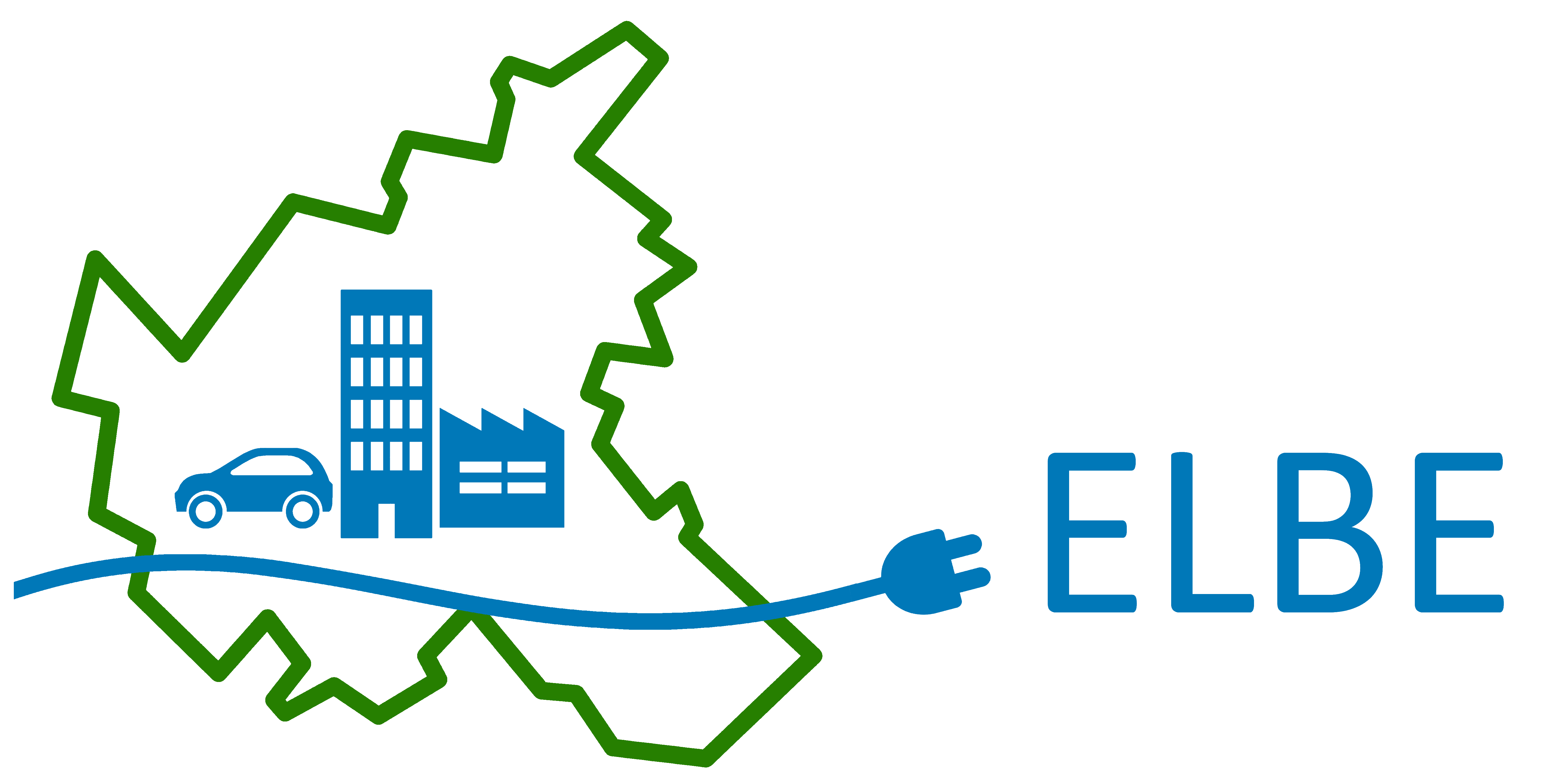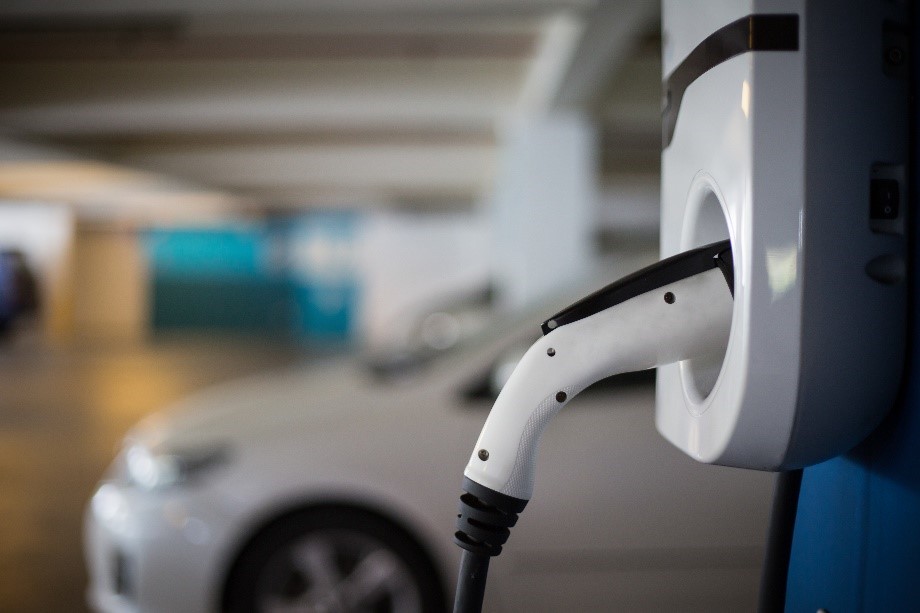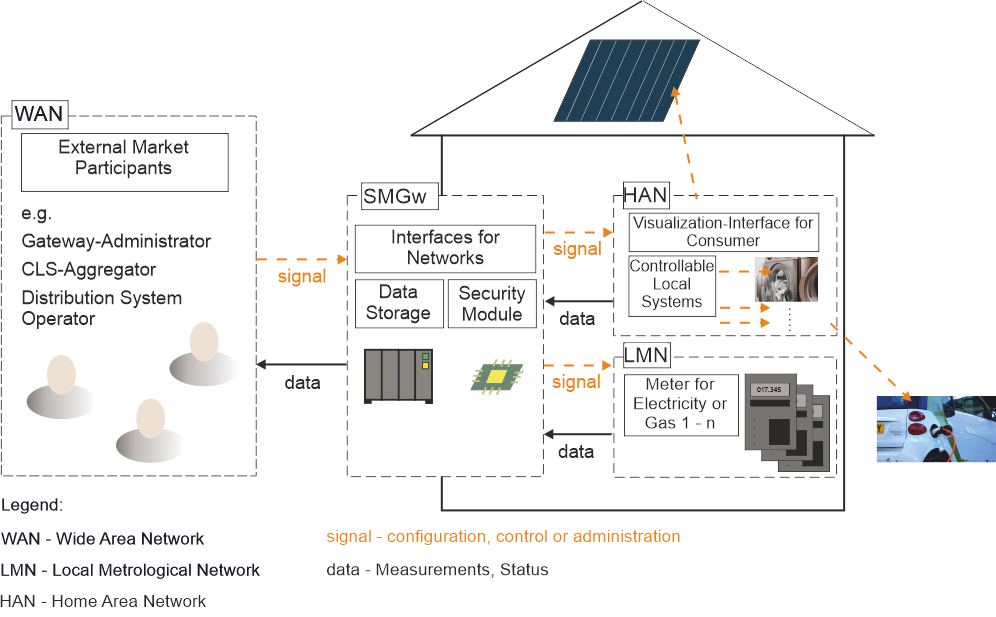
FKZ: 01MZ18014F
The goal of the ELBE project is to install, test, and analyze while in operation 7,400 charging stations in the city of Hamburg. These charging stations are designed to have a beneficial influence on the electrical grid and can operate intelligently. The University of the Federal Armed Forces Hamburg (Helmut-Schmidt-Universität; HSU) will provide scientific expertise for the implementation of charging protocols that will reduce stress on the electrical grid. Participants in the project are distribution system operators (DSOs), charging point operators (CPOs) and users of electric vehicles (EVs). How efficiently the operation sequence DSO—Signal—CPOBackend—Charging station—EV is implemented will be determined by identification of the requirements pertaining to each individual member of said sequence.

Grid-beneficial Charging — Concept
Today’s installed charging stations do not offer any option for charging operations that benefit the electrical grid. After installation of a charging station, CPOs do monitor and interpret data as to the workload experienced by such a station and the amount of energy drawn from it. However, it is currently impossible to adjust the energy output according to the state of the electrical grid. Within ELBE, a charge management system will be implemented that adjusts the energy output according to the state of the grid so as to guarantee a charge current of at least 8 amperes. As a result, all types of EVs can be charged without interruption.

Investigation
HSU investigates the functionality of the operation sequence DSO—Signal—CPOBackend—Charging station—EV. The aim is to determine repercussions for the electrical grid, asymmetries during part-load operation, and the degree of efficiency of EVs in different charging modes. Moreover, the implementation of further specifications of the developed interface, the so-called Open Automated Demand Response or OpenADR, will be checked and validated.

Integration of Secure Communication via Smart-Meter-Gateway in the Charging Infrastructure
From 1 January 2020, project ELBE was enhanced by an associative inclusion, on a pilot-character basis, of the Smart-Meter-Gateway (SMGw) technology in the charging infrastructure for electric mobility concepts. As central communication unit of an intelligent metering system (iMES), SMGw will enable future applications of the Smart-Grid for the first time. The main challenge is to build up a secure chain of communication according to the requirements defined by the Federal Office for Information Security (Bundesamt für Sicherheit in der Informationstechnik; BSI). The overarching goal of the project is thus defined as the testing of a cyber-secure communication to control individual charging stations. In a technical report the BSI has stipulated high demands on the data security for an SMGw infrastructure (viz. BSI TR-03109-1). Whether those demands are met by any manufacturer/provider has to be verified by a certification procedure.
The basic integration of SMGw and the communication interfaces to adjacent grids is depicted in Figure 4. The Wide Area Network (WAN) encompasses the gateway administrator as a secure instance for the configuration and administration of the SMGw and other market participants, who need access to read-out data. The Local Metrological Network (LMN) comprises metering devices for electricity and, if applicable, other variables that are to be sent to the SMGw. The Home Area Network (HAN) allows for the end user to enter the SMGw in order to access stored data. The HAN interface also offers communication with controllable units that either consume or provide energy; charging stations being an example for the latter.

Within the framework of the associative research provided by HSU, a visualization- and demonstration-laboratory for SMGw will be operated. This will allow for continuous research into the possibilities to design and/or react to flexible energy-consumption and -generation patterns. Also, the potential for a transfer of the gained insights about charging infrastructure to other areas will be evaluated.
Within grid simulations the results from the visualization- and demonstration laboratory will be scaled in order to draw conclusions about the operation behaviour of the grid.
Project Partners:

Contact:
Prof. Dr.-Ing. habil. Detlef Schulz (project leader)
Sahar Darvish, M. Sc.
Felix Heider, M. Sc.
Reiner Jordan, Dipl.-Ing. (FH)
Faculty for Electrical Engineering
Electrical Power Systems
Further Information:
ELBE-Website (german)
Letzte Änderung: 9. March 2022

